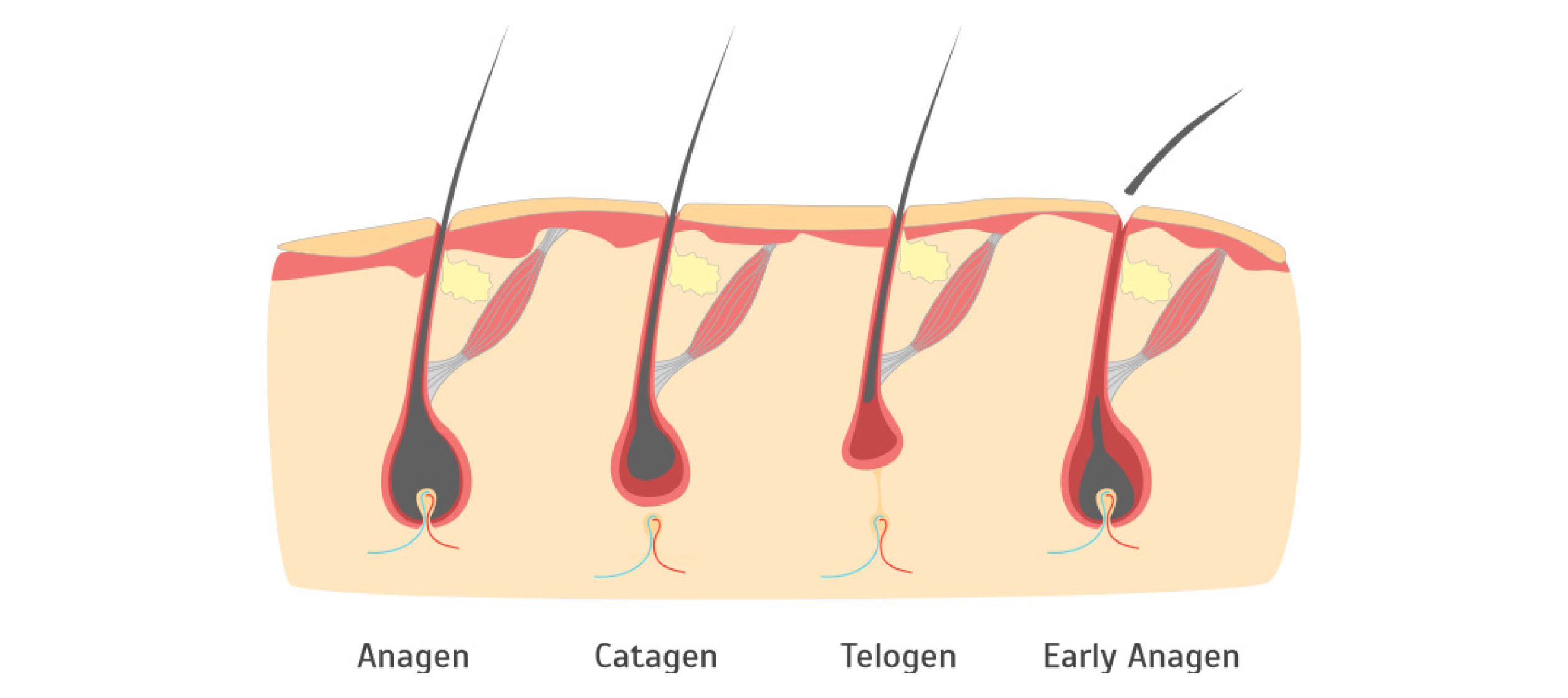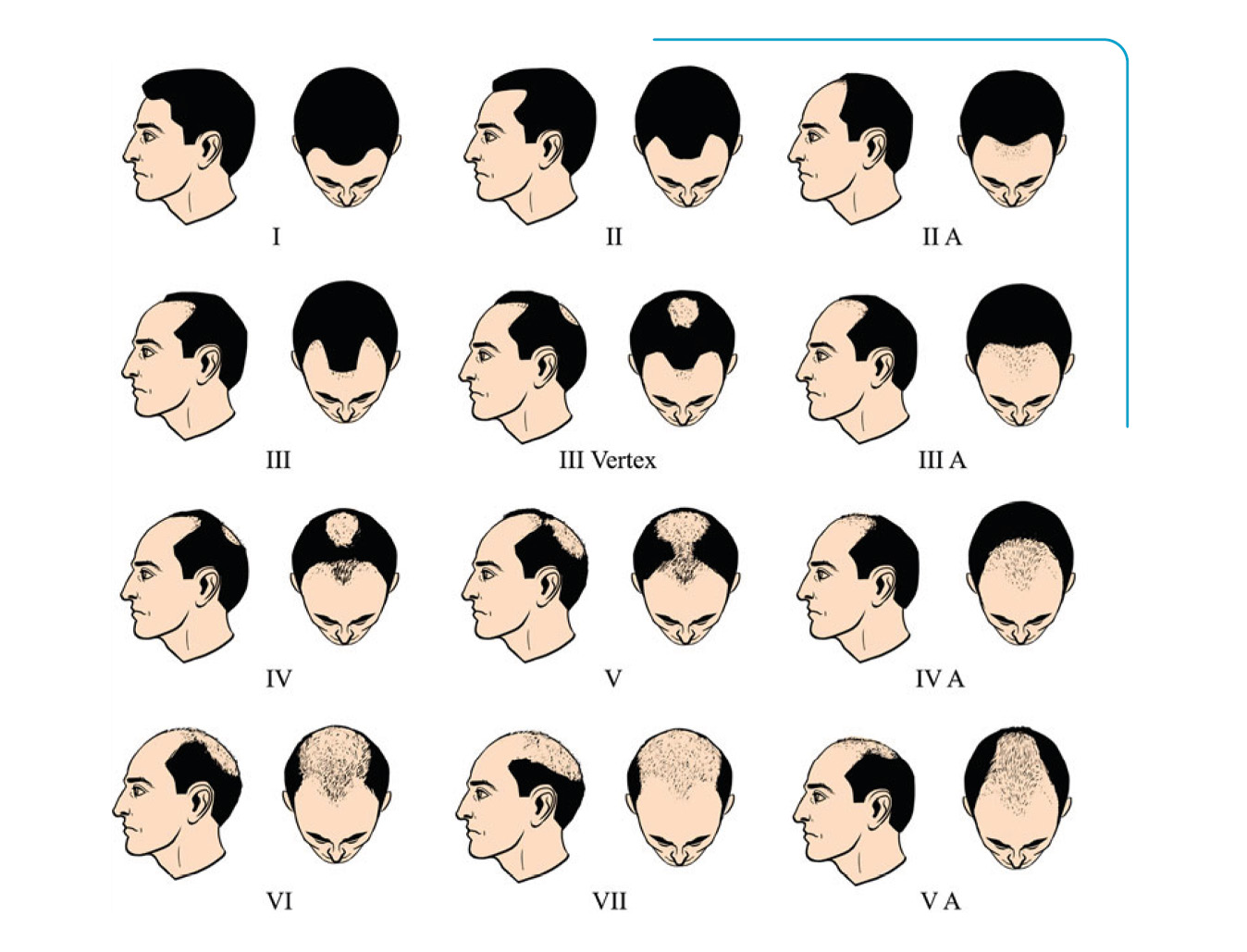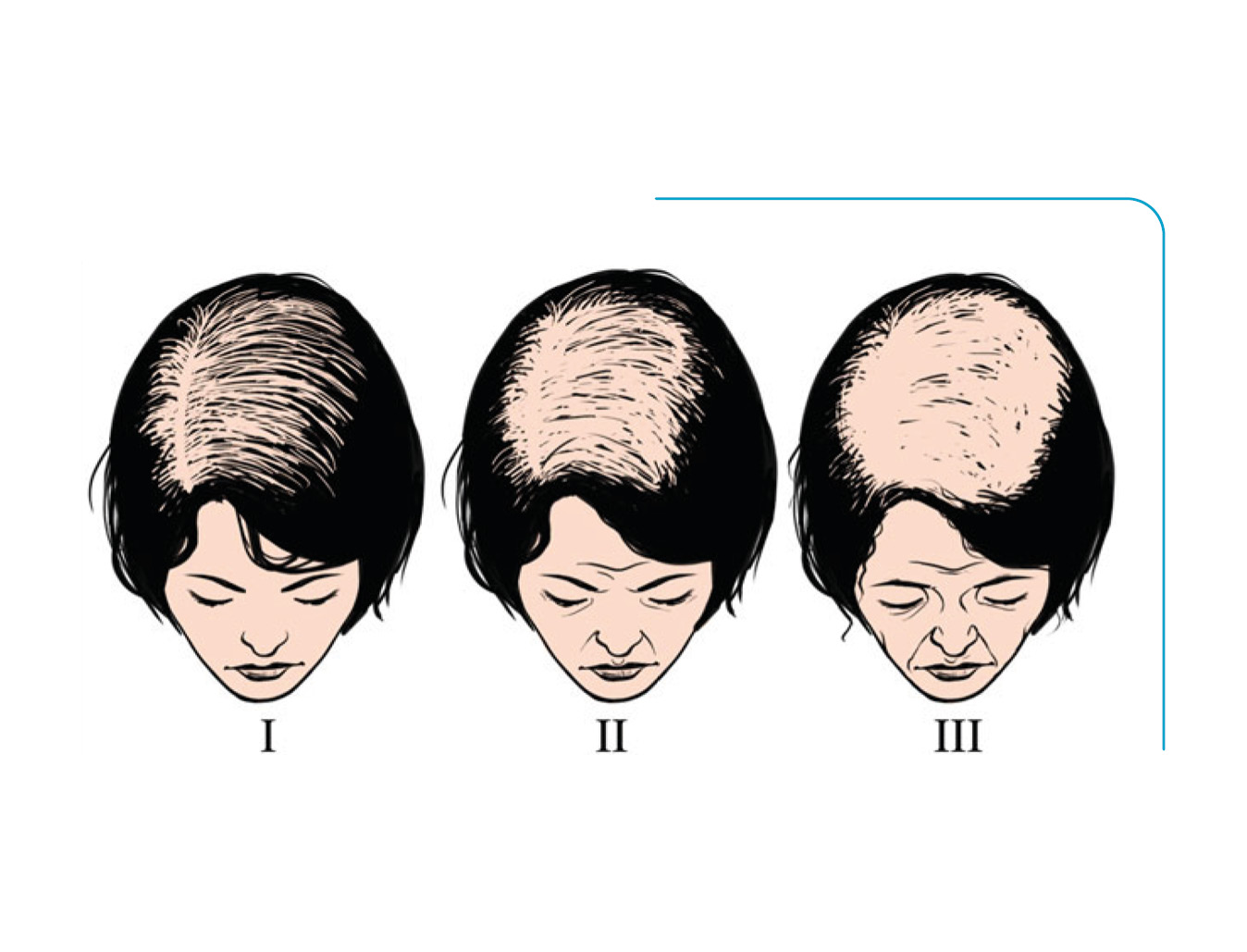Losing a few hairs every day is completely normal, as our hair is in a continuous cycle of renewal. However, if you want to avoid any potential for baldness, there is cause for concern in the event of accelerated hair loss.
There can be many causes for significant hair loss. However, it is possible to prevent and treat hair loss if the problem is taken care of early enough.
Hair loss: a natural phenomenon of renewal
Depending on the person, our hair can include between 100,000 and 150,000 hairs and is constantly being renewed.
We lose between 50 to 100 hairs every day, which are replaced by new growth.
Each hair follicle on our skull produces a strand of hair. This production process is your hair cycle. During an average period of 2 to 5 years in men and 3 to 7 years in women, the hair grows at a rate of 2 millimeters per week. At the end of this growth phase, the dead hair then remains attached to our scalp for several weeks before falling out. Once the hair is lost, the follicle begins a new cycle.
This cycle can repeat itself between 20 and 25 times before running out.

Note
Over time, from cycle to cycle, the hair produced by the follicles gets thinner and thinner. This explains why an aging person has thinning hair, although they still have as much hair attached to the scalp.
Hair loss: when to be concerned?
So, there is no need to worry if you notice a few hairs left in your hand after running it through your hair, find some caught in your comb or brush, or spot one falling onto your desk.
Accelerated or pathological hair loss is only discussed if the number of strands lost each day is greater than 100, or if hair loss is more significant on a delimited area of the scalp than on the rest of the skull.
If you notice more significant hair loss, it is necessary to establish a diagnosis and look for the cause of the problem.
Different forms of hair loss
Hair loss can have various causes: genetic, hormonal, physiological or psychological. It can be permanent or temporary and affects both men and women.
Androgenetic alopecia in men
Androgenetic alopecia is the most frequent cause of hair loss.
Its origin is both hormonal and genetic. It is caused by the combination of two factors:
- the presence of androgens (male hormones)
- a genetic predisposition of the hair follicles to be sensitive to male hormones
As a result, male hormones induce an acceleration of the hair's life cycle. The hair growth phase is then shorter. The cycles follow each other more quickly until the hair follicles are exhausted. Eventually they stop working and hairs becomes more sparse.
One in two 50-year-old men are affected by this problem. However, it can appear much earlier, starting from puberty.
In men, androgenic alopecia first manifests as a baldness in the frontal and temporal areas of the scalp.

Androgenetic alopecia in women
Women can also suffer from androgenetic alopecia.
The causes are the same as for men, women also produce male hormones secreted by the adrenal glands and ovaries. This completely natural secretion of androgens occurs in much lower proportions than in men.
However, a dysregulation in the production of these hormones or a hypersensitivity can have an impact on the hair. In women, hair loss is more dispersed and progresses more slowly. It is characterised by a lack of hair on the top of the scalp.

Alopecia areata on a normal scalp: alopecia areata and trichotillomania
This is described as alopecia areata on a normal scalp when the hair is sparse or absent from certain areas of the scalp, while other areas are normal and healthy.
Alopecia areata and trichotillomania are the two main causes of this problem.
Alopecia areata is an autoimmune disease causing complete hair loss on small areas of the scalp.
Trichotillomania is a nervous tic that consists of pulling on or twisting the hair, resulting in a lack of hair in specific areas.
Alopecia areata on a damaged scalp
Certain skin diseases or infections as well as scars from shocks or burns can lead to the destruction of hair follicles in the affected areas. This is called areata or scarring alopecia on a damaged scalp.
If the deterioration of the scalp is of inflammatory origin, it is important to quickly determine the cause – lichen planus or lupus for example. We can then immediately put in place the correct treatment and prevent irreversible hair loss due to too late of a diagnosis.
Other causes can lead to damage of the scalp, such as ringworm or fungal infections. They are particularly common in children. In most cases, the hair grows back following treatment.
Telogen effluvium
Telogen effluvium is a disruption of the hair cycle. It is characterised by sudden, significant, non-localised or generalised hair loss. It can be due to physiological factors (dietary deficiencies, being postpartum, surgical procedures, extreme fatigue, etc.), psychological (emotional shock, intense stress, depression, etc.), or even environmental factors (such as the change of seasons, etc.)
This form of temporary hair loss is considered harmless.
Preventing or treating a hair loss problem
As discussed, there are various causes that can lead to hair loss. When you notice the beginning of your hair loss, it is therefore important to consult a dermatologist without delay in order to establish a diagnosis. By acting quickly, we can indeed prevent or at least delay baldness. Depending on the nature of your hair loss and its causes, various treatments can be considered: local treatments, oral medications, or even surgery in the most severe cases.





